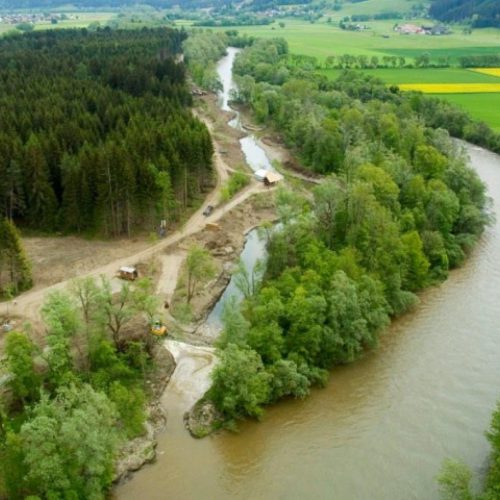News
River Mura nominated for International Thiess River Prize
Restoration projects along the Mura in the Austrian province of Styria have started 20 years ago with the project "River Mur" which managed now to be amongst the three world’s best candidates for the environmental award of the "International River Foundation" (IRF).
"River Mur" already won the European River Prize in autumn 2014, prevailing against ten other European river basin management projects. With this achievement, the “River Mur” project has automatically qualified for the "International Thiess River Prize", which is awarded annually by the IRF.
Projects from around the world competed for the Thiess river restoration award, which will be presented at the International River Symposium in Brisbane, Australia on September, 22nd 2015. Next to the "Mur River" project, the Australian “Lake Eyre Basin” project and the Jordanian “Jordan River” restoration project are in the finals.
The Mura River covers a length of about 300 kilometres through Styria and ever since the early decades of the 20th century, continuous regulation has greatly changed the original course of the river. This has led to degradation of the riverbed and with it to a loss of biodiversity, a drying out of floodplain forests and an increased risk of flooding. This is why extensive restoration measures have been implemented on the entire Mura since 1995. Approximately 14,5 million Euros were invested by the province of Styria, the Austrian Ministry of Agriculture, Forestry, Environment and Water Management and the EU in order to bring back the Mura’s flow to a near-natural state. So far, six EU projects along the Mura were implemented, which lead to the revitalisation of about 30 river kilometres.
“The fact that the Mura is nominated for such a big environmental prize nicely shows that river restoration on the Mura is the right way to go. It surely is also a big motivation for everyone involved to follow this successful path in future and to bring back life to other parts of the Mura xas well”, says Arno Mohl, freshwater expert at WWF. “Therefore, plans by the Slovenian energy lobby to build a total of 8 hydropower plants along the Mura in the Slovenian-Austrian border region are contradicting the spirit and justification of this international recognition” Mohl adds. This is in particular true, as long stretches of the Mura are already destroyed and used for electricity production through a chain of about 26 hydropower dams.
The nomination also emphasises the importance of studies such as the WWF Restoration Potential Study, which shows a staggering restoration potential for the future 5-country Transboundary UNESCO Biosphere Reserve “Mura-Drava-Danube” (TBR MDD)”: within the Mura-Drava-Danube riverine area, a total of 650 kilometres of river banks could be restored, 120 side-channels reconnected and 165,000 hectares of floodplains newly created.



